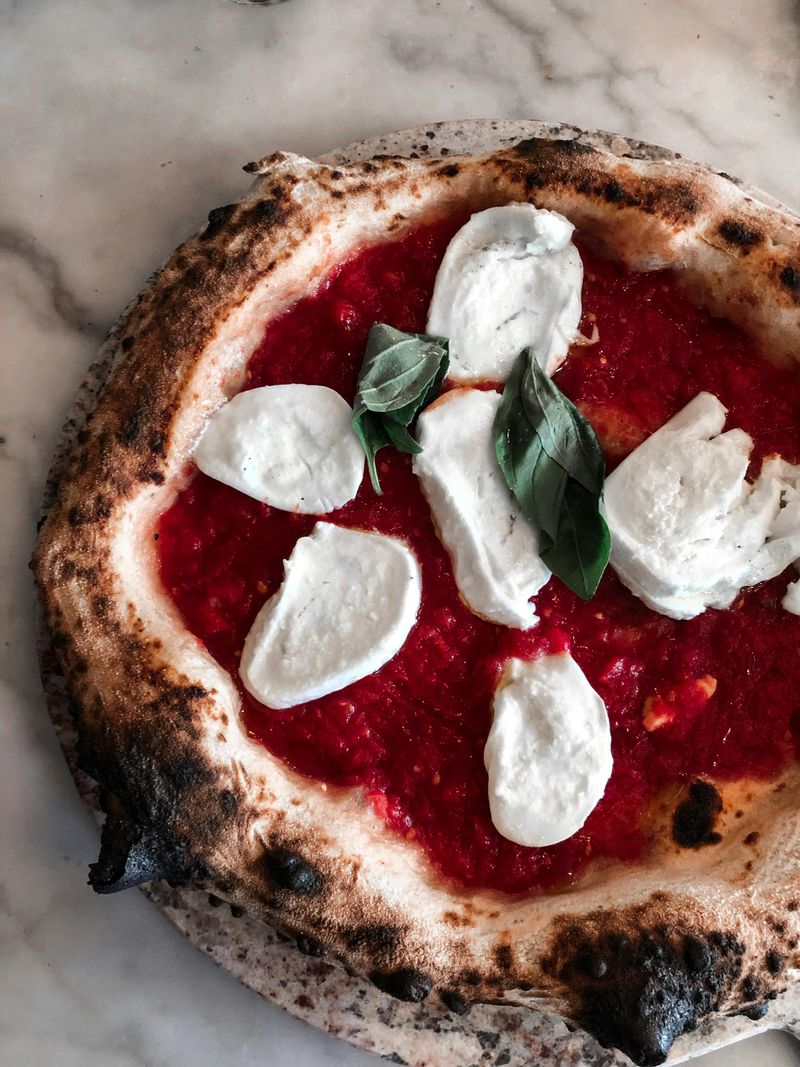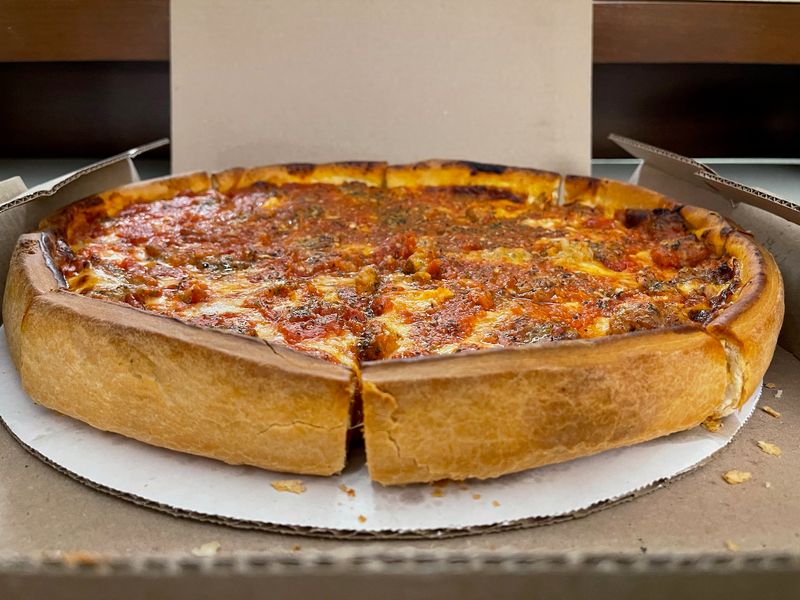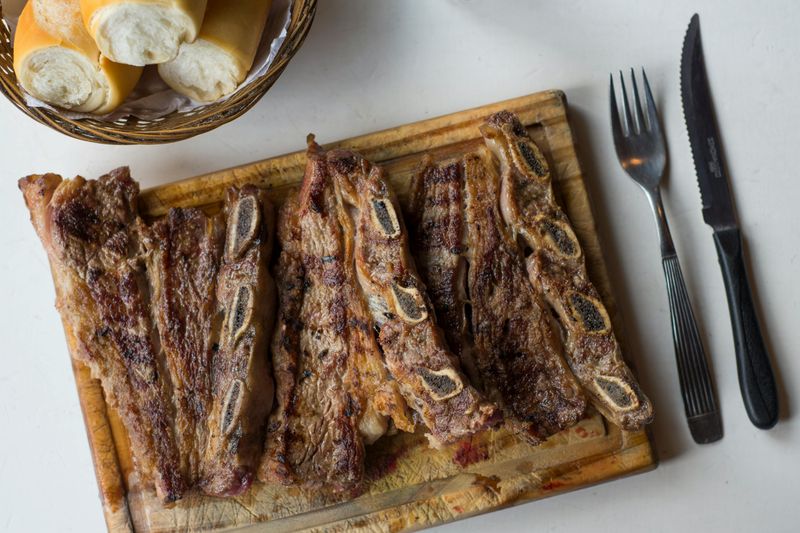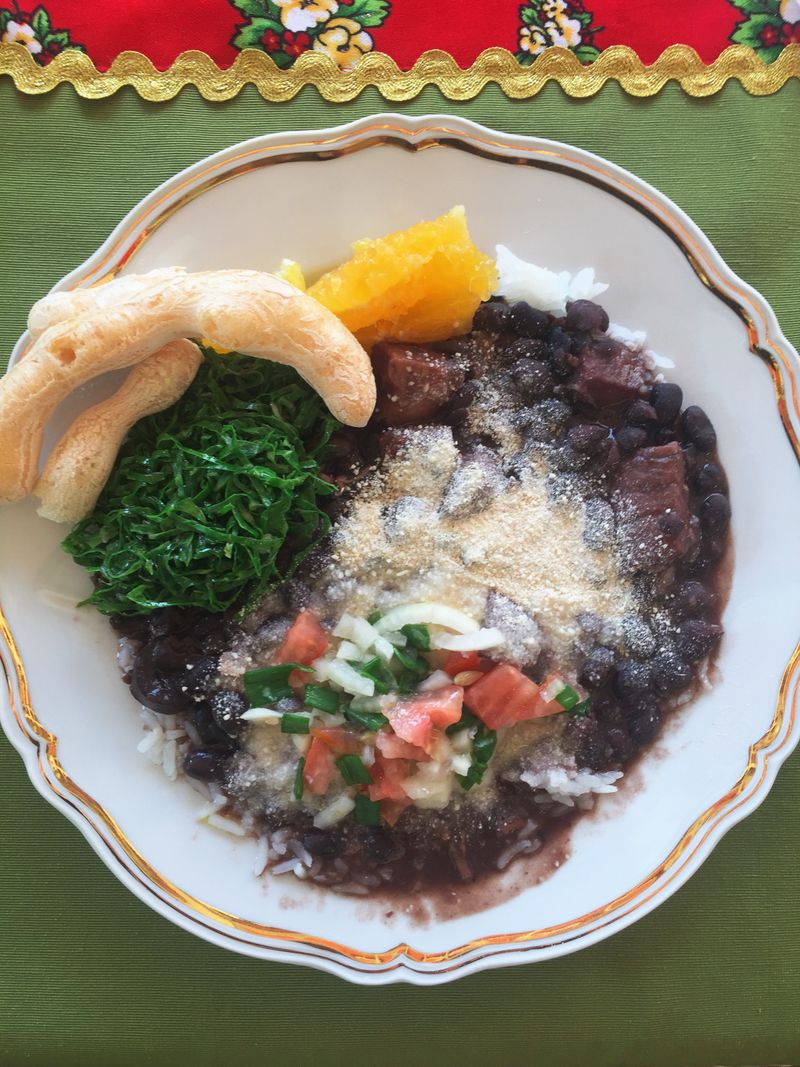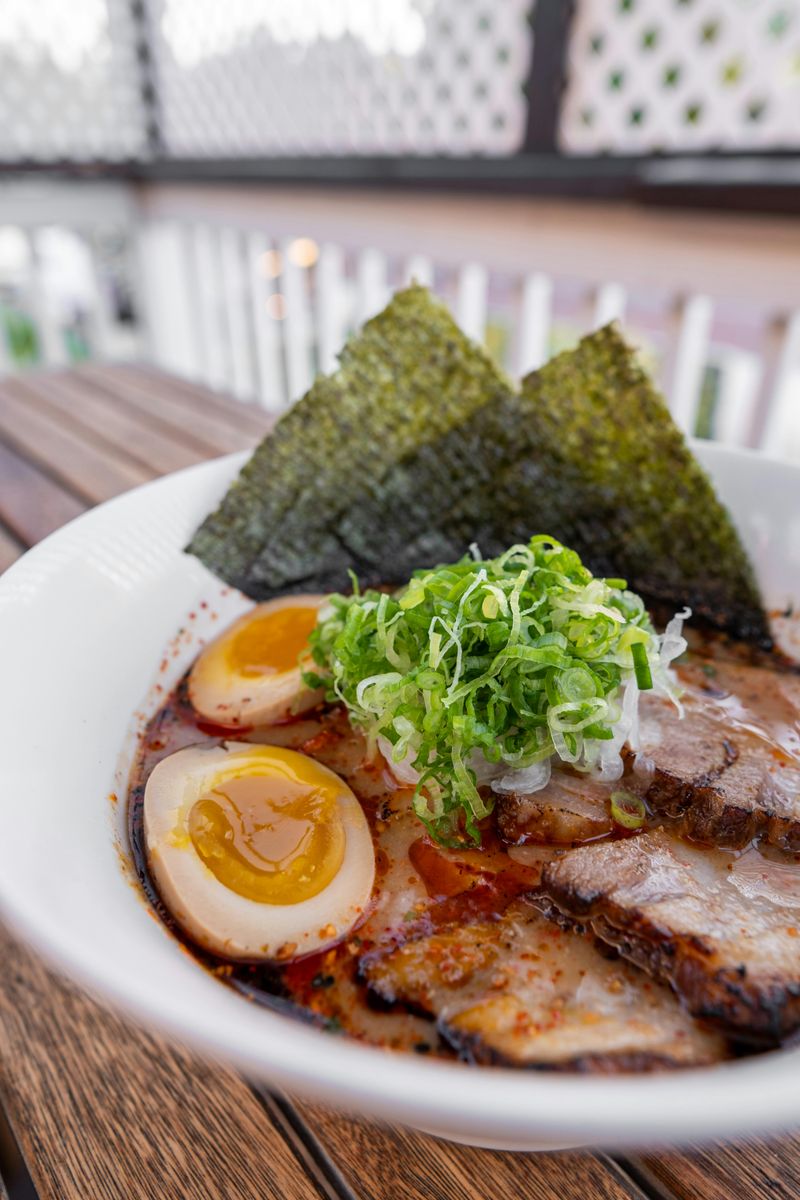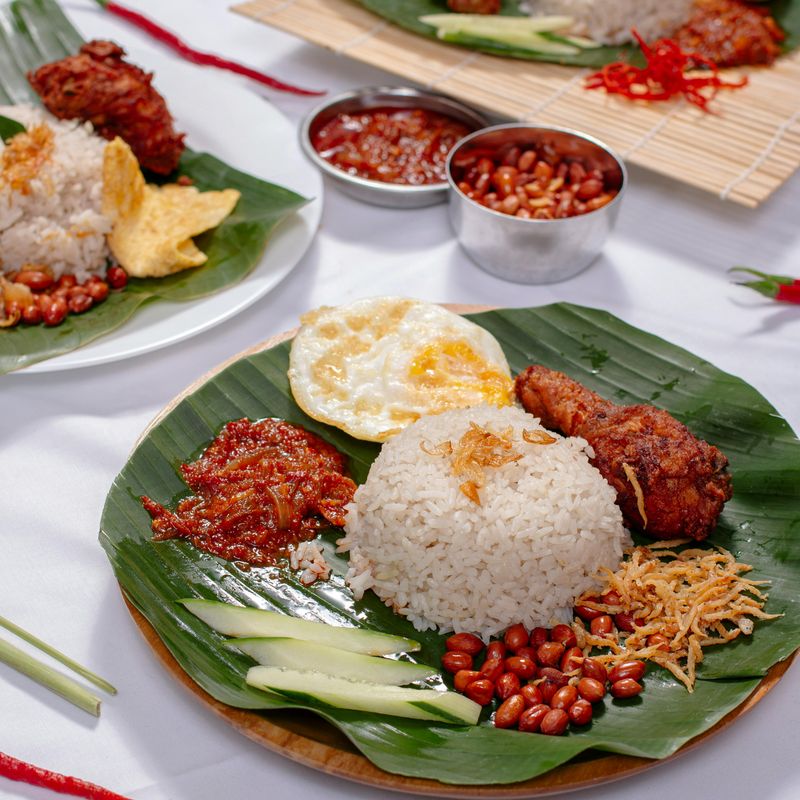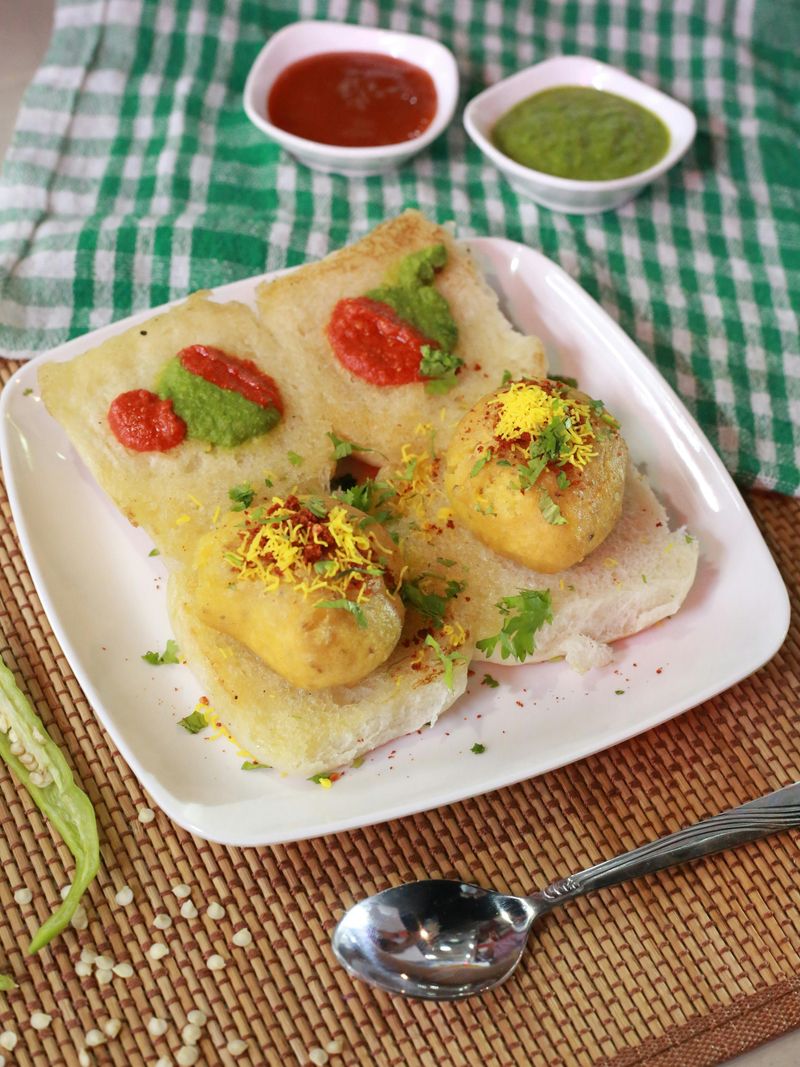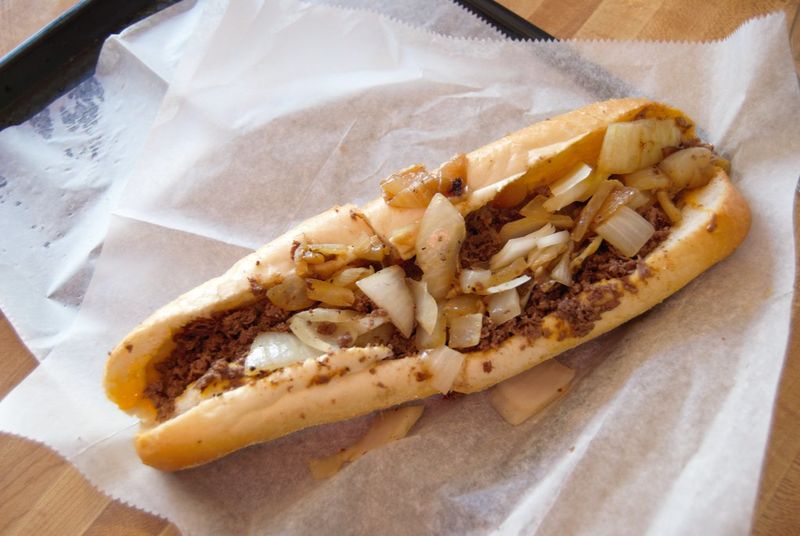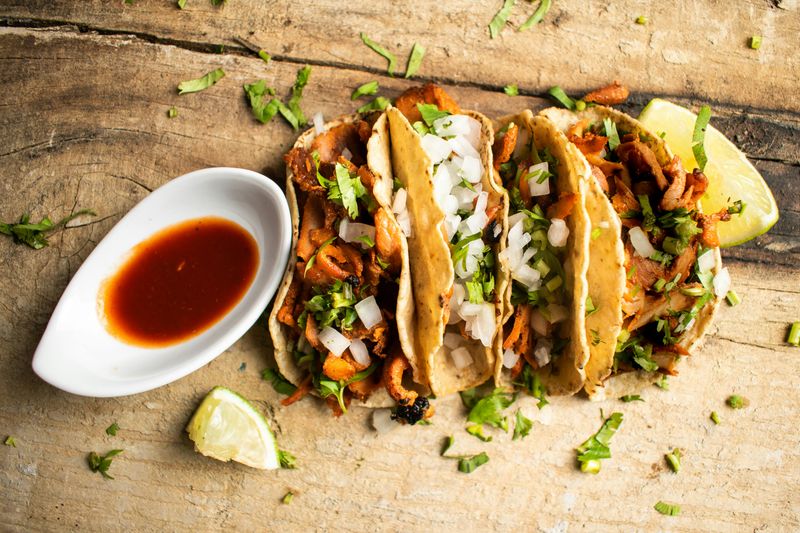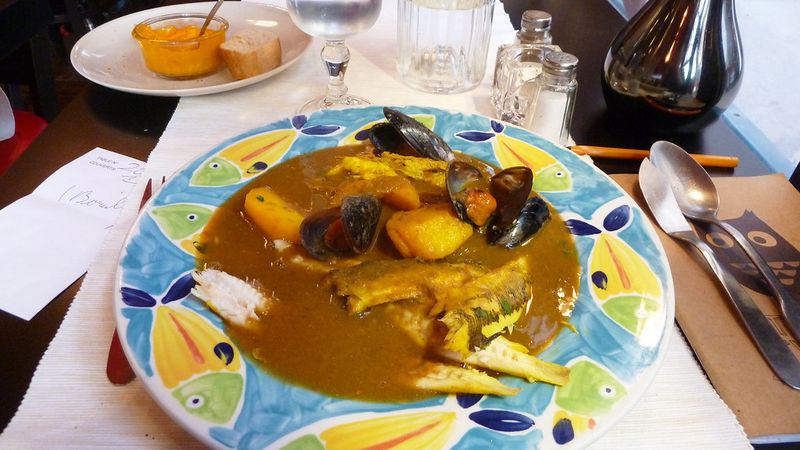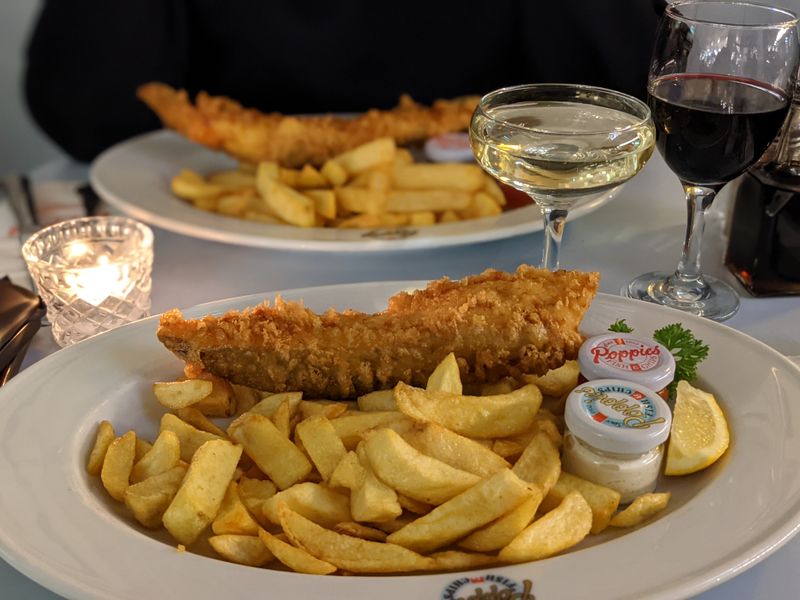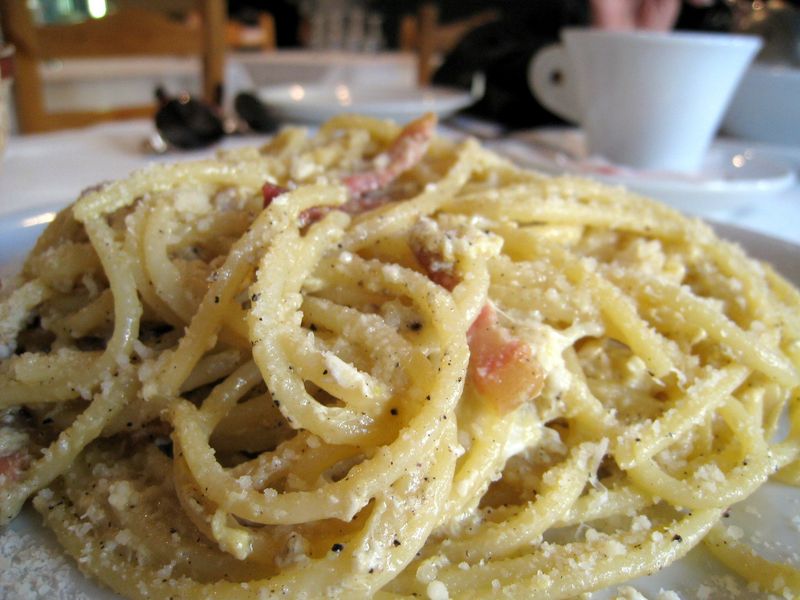Food tells stories of places and people like nothing else can. When we travel, local dishes open windows into cultures, histories, and traditions. These 12 iconic dishes have become so linked to their cities that they serve as edible ambassadors, drawing food lovers from around the world who want to taste authenticity at its source.
1. Pizza Margherita — Naples, Italy
The simplicity of Pizza Margherita hides its revolutionary impact on food history. Created in 1889 for Queen Margherita of Italy, this pizza showcases the national colors: red tomatoes, white mozzarella, and green basil.
Naples’ pizzaiolos follow strict traditions, using wood-fired ovens that reach 900°F, creating those signature leopard-spotted crusts in just 90 seconds. The dough must be hand-kneaded and left to rise for specific periods.
A true Neapolitan Margherita earns official certification, making it more than just food—it’s a protected cultural treasure. Locals eat it folded into a wallet-like ‘portafoglio’ to enjoy on the go.
2. Deep-dish Pizza — Chicago, USA
Unlike its thin Italian cousin, Chicago’s deep-dish pizza stands tall and proud—literally. Invented at Pizzeria Uno in 1943, this hearty creation resembles more of a pie than a traditional pizza with its high edges and reversed topping order.
The construction follows specific rules: a buttery crust lines a deep pan, followed by slices of mozzarella, toppings, and finally topped with chunky tomato sauce. This backwards approach prevents cheese from burning during the long bake time.
Chicagoans debate fiercely about which landmark pizzeria serves the best version—Lou Malnati’s, Giordano’s, or Gino’s East each have devoted followers willing to wait hours for a table.
3. Asado — Buenos Aires, Argentina
More than just a meal, asado represents Argentina’s soul on a plate. Sundays in Buenos Aires revolve around this ritual where families gather for hours as different cuts of beef slowly transform over open flames.
The parrillero (grill master) orchestrates everything, timing each cut perfectly—starting with achuras (offal) and chorizos, then moving to larger cuts. Salt is the only seasoning needed for Argentina’s world-famous grass-fed beef.
The experience comes with unwritten rules: never rush the cook, always accept a glass of Malbec, and prepare for multiple rounds of meat. Porteños (Buenos Aires locals) consider proper asado technique a birthright, passed down through generations like precious family heirlooms.
4. Feijoada — Rio de Janeiro, Brazil
Saturdays in Rio mean one thing: feijoada day. This hearty black bean stew loaded with various pork cuts tells Brazil’s complex history in each spoonful, born from enslaved people making meals from leftover meat parts.
Today’s version simmers for hours, combining beans with everything from sun-dried beef to smoked sausage, pork ribs, and ears. Served with rice, collard greens, orange slices, and farofa (toasted cassava flour), it creates a perfect balance of flavors and textures.
Cariocas (Rio locals) plan their weekends around this meal, which requires a mandatory post-feast nap. The dish’s communal nature makes it perfect for Rio’s social culture—slow food for a city that values connection over rushing.
5. Ramen — Tokyo, Japan
The steam rising from Tokyo’s ramen shops tells stories of obsession and perfection. What began as a Chinese import has evolved into Japan’s ultimate comfort food, with chefs spending decades mastering just one style.
Tokyo’s signature shoyu (soy sauce) ramen features clear, complex chicken-and-dashi broth, with thin, firm noodles and precisely arranged toppings. Every element requires precision—eggs marinated exactly 36 hours, chashu pork cooked at specific temperatures, and noodles boiled to the second.
Eating follows its own etiquette: slurp loudly (a compliment to the chef), eat quickly while it’s hot, and never leave noodles behind. Tokyo’s ramen culture runs so deep that Michelin-starred chefs and businessmen stand in hour-long lines for legendary shops like Tsuta.
6. Nasi Lemak — Kuala Lumpur, Malaysia
The unofficial national dish of Malaysia greets Kuala Lumpur residents from dawn at street corners and night markets. Nasi lemak’s genius lies in its perfect balance—coconut rice surrounded by a symphony of contrasting elements.
The foundation is rice cooked in coconut milk and pandan leaves, creating a fragrant base. Around it: spicy sambal, crispy ikan bilis (anchovies), roasted peanuts, cucumber slices, and a boiled egg, traditionally wrapped in banana leaf packages.
Morning commuters grab simple versions for breakfast, while evening brings elaborate variations topped with fried chicken, beef rendang, or squid sambal. Malaysians judge new restaurants by their nasi lemak quality, making it both daily sustenance and the standard by which culinary skill is measured.
7. Vada Pav — Mumbai, India
Mumbai’s streets pulse with energy, and vada pav matches this rhythm perfectly as the city’s favorite grab-and-go meal. Created in the 1960s by street vendor Ashok Vaidya, this humble potato dumpling sandwich has become Mumbai’s great equalizer.
A spiced potato mixture gets dipped in chickpea batter, fried golden, then stuffed into a soft pav (bun) smeared with fiery garlic and chili chutneys. The contrast between crispy exterior and soft interior creates magic in every bite.
Office workers, students, and celebrities all stand in the same lines outside famous spots like Ashok Vada Pav in Dadar. At just 15 rupees (about 20 cents), it represents Mumbai’s working-class roots while delivering complex flavors that cross all social boundaries.
8. Cheesesteak — Philadelphia, USA
The Philadelphia cheesesteak demands commitment—to opinions, to messiness, and to local tradition. Born in 1930 when hot dog vendor Pat Olivieri threw beef on his grill, this sandwich sparked a rivalry that divides the city to this day.
Ordering follows strict unwritten rules: specify cheese type (Whiz, American, or provolone) and whether you want onions (‘wit’ or ‘witout’) quickly to keep the line moving. The magic happens as paper-thin ribeye sizzles on the flattop, getting chopped with metal spatulas before being scooped into a crusty roll.
Locals judge tourists who photograph their sandwiches instead of immediately diving in, as proper cheesesteak consumption requires the ‘Philly lean’—bending forward to avoid dripping on your clothes.
9. Taco al Pastor — Mexico City, Mexico
The vertical spit spinning in Mexico City taqueria windows tells a surprising multicultural story. Taco al pastor emerged when Lebanese immigrants brought shawarma techniques to Mexico in the 1930s, creating a perfect fusion food.
Marinated pork stacks onto a vertical trompo (spinning top), cooking slowly as the exterior caramelizes. Taqueros slice it directly onto small corn tortillas, adding fresh pineapple, onion, cilantro, and lime.
Mexico City nights revolve around these tacos, with friends meeting at favorite stands that set up after dark. The best taqueros achieve celebrity status, recognized for their knife skills and perfect meat-to-pineapple ratio. A proper al pastor creates a flavor explosion that somehow fits into just two perfect bites.
10. Bouillabaisse — Marseille, France
The Mediterranean sings in every spoonful of Marseille’s famous fish stew. Originally created by local fishermen using unsold catch, today’s bouillabaisse follows strict rules established by the Marseille Bouillabaisse Charter to protect authenticity.
True bouillabaisse requires at least four specific local rockfish varieties, saffron, fennel, orange peel, and olive oil. The presentation follows tradition: fish broth arrives separately from the seafood, with garlic-saffron rouille spread on crusty bread that gets floated atop the soup.
Marseillais families pass down closely guarded recipes through generations. The dish connects diners directly to the city’s ancient port, with each restaurant claiming their version best captures Marseille’s soul. Proper serving requires multiple courses and plenty of local rosé wine.
11. Fish and Chips — London, UK
The newspaper-wrapped bundle has fueled London for over 150 years, through wartime rationing and changing food trends. Fish and chips emerged in London’s East End as working-class fuel, combining Jewish fried fish traditions with Belgian potato frying techniques.
Proper London fish and chips demands specific elements: sustainably caught cod or haddock in crisp beer batter, thick-cut chips (never skinny fries), malt vinegar, and a side of mushy peas. The best shops fry in beef dripping rather than vegetable oil for extra flavor.
Beyond taste, it represents British resilience—Churchill exempted it from WWII rationing to maintain morale. Today, Londoners still queue at historic ‘chippies’ like Poppies or Golden Union, where the combination of crispy exterior and steamy interior creates perfect comfort food.
12. Carbonara — Rome, Italy
Romans defend their carbonara recipes with the same passion they show for AS Roma football club. This seemingly simple pasta dish—created after WWII when American soldiers brought bacon and eggs to Italy—follows strict rules that spark heated debates throughout the Eternal City.
Authentic carbonara contains just five ingredients: pasta (rigatoni or spaghetti), guanciale (cured pork jowl), eggs, Pecorino Romano, and black pepper. The technique creates magic—hot pasta tossed with rendered guanciale, then mixed with eggs and cheese to form a silky sauce without scrambling.
Romans consider adding cream or garlic culinary crimes. Neighborhood trattorias serve their versions on warm terraces, where locals twirl pasta with one hand while gesturing emphatically about proper technique with the other.
